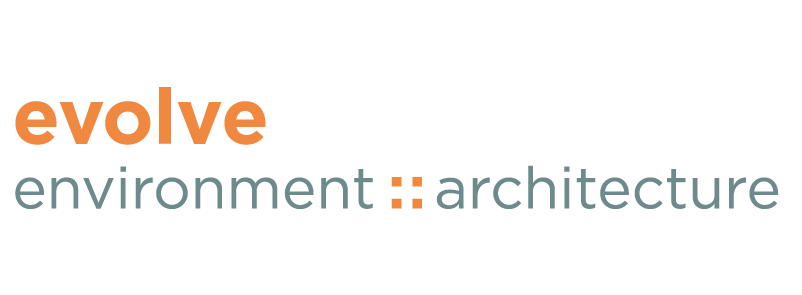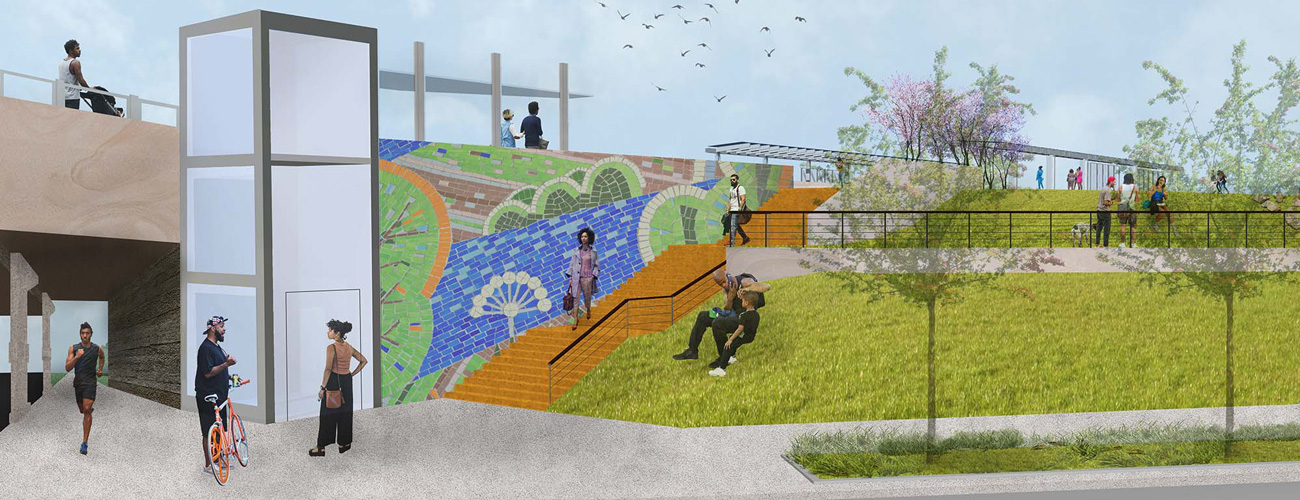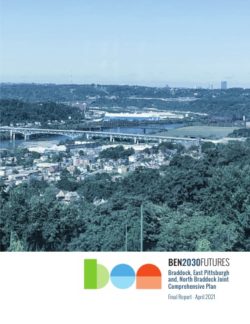Transportation Planning: Adaptation Through Connection
While working on transportation plans during the pandemic, I heard concerns like, “How can we make plans when we don’t know what the future will look like?” My answer was steadfast: the fundamentals of a safe, accessible network remain the same, regardless of whether our lives revolve around one central business district or many dispersed ones; whether we work in one venue or many. Walkable communities have been supporting sustainable land use, efficient transportation, public health, and local businesses for centuries. Focusing on those fundamentals will make us resilient.
Now, as we adjust to another shock to the system — transitioning from the most infrastructure funding we’ve ever seen to an unknown future — there’s no reason to stray from this path. Since late in the last century, communities around the world have been responding to the impacts of auto-first policies and adapting their infrastructure to balance the needs of drivers with other street users and the needs of building occupants with travelers. As designers and planners, the evolveEA team works every day on projects for municipalities, public agencies, and nonprofits that tackle these challenges.
Our involvement in transportation planning projects over more than a decade have led evolveEA to develop its current approach to mobility:
- Safe
- Systemic
- Social
- Sustainable
Mobility Principles
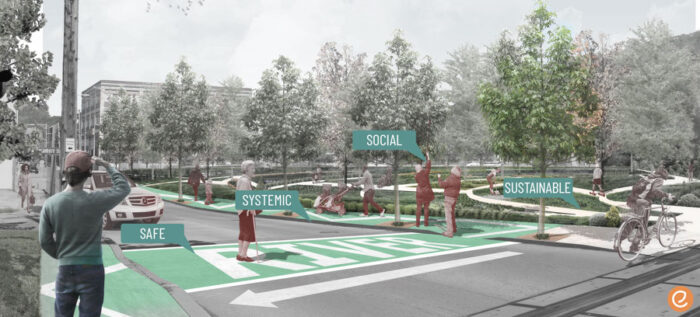
We are planning for transportation infrastructure that results in zero deaths and contributes positively to the system as a whole. We design places for mobility that foster positive interactions between people and have positive impacts on the environment. Efficient and effective transportation starts with smart land use and infrastructure.
Development
Dense, mixed-use development in small blocks make walking to access goods, services, transit, and jobs easier. When we integrate that type of development with high-quality transit service, we call it transit-oriented development (TOD). evolveEA has been working with Pittsburgh Regional Transit to plan for new TOD in its system since 2016. Most recently, our team supported the agency with a corridor plan for the eastern half of the Martin Luther King, Jr. East Busway called BOTEB (Building On The East Busway). As a later phase of the BOTEB project, evolveEA helped the agency to envision new station facilities as well as TOD in the area currently occupied by the Wilkinsburg park and ride lot. This project will improve transit user access and comfort and, eventually, bring a catalytic development project to the Wilkinsburg community.
Excerpts from PRT Wilkinsburg and Brushton Stations BOTEB Station Area Plan (Sep, 2023)
Infrastructure
In the space between where we are and where we want to be is the part of the built environment that we frequently take for granted: transportation infrastructure. Sidewalks, streets, steps, trails and trains, plazas and parks, and of course bus lanes and busways all create the space for us to travel. These places are composed of the essential surfaces and systems that enable our movement but keeping them in good repair and accessible to users of all abilities is a sisyphean task given the limited resources available to those with disproportionate responsibility.
One tool available in Pennsylvania to address this challenge as it pertains to transit access is the Transit Revitalization Investment District (TRID). In 2018, evolveEA was a key member of the team that completed the Connecting Wilkinsburg TRID Study. TRID is a complex and underutilized policy tool that can be used to fund transit-related infrastructure improvements. The evolveEA team helped the borough identify its transit-related infrastructure needs, the associated costs, and how new transit-oriented development could facilitate those improvements.
One challenge that the Wilkinsburg TRID and station area plans address is access across a corridor occupied by massive train and busway infrastructure that serve the area as well as divide it. This type of challenge is even more poignant in places where highways create the barriers; as we well know, highway infrastructure was often built to serve wealthy white suburbs while destroying less affluent Black communities. In recent years, the prevailing view in urban planning has been to right these wrongs through amending the offending infrastructure design.
evolveEA is contributing to two such projects: we led development of the BEN (Braddock, East Pittsburgh, and North Braddock) Joint Comprehensive Plan, which led to a recent award of $2 million in federal Reconnecting Communities planning funds for the Reconnecting America’s Industrial Heartland: Turtle Creek Valley Rail and Road Corridor Alternatives Study. We are also on the team that will work with the Manchester community to develop Manchester Reunited: Reconnecting Manchester to The River and The Region, a plan for the future of the Route 65 corridor with $1.4 million awarded from the same program in 2023.*
Experience
While we might take for granted the presence of transportation infrastructure, we tend to notice when the experience is difficult. Design and planning at the human scale are what make or break this experience for travelers, especially the vulnerable ones (i.e. without a steel frame to protect them). At evolveEA, we don’t just want people to reach their destination uninjured, we hope they will enjoy the journey as well.
evolveEA has planned streetscape improvements for communities from Mt. Oliver to Mt. Lebanon, PA and from West Huntington to Charles Town, WV. We seek to bring those sensibilities, in which the street is a space that contributes to community culture and identity, in tangible and intangible ways, to our mobility work. As we begin development of Wilkinsburg’s pedestrian health, safety, and access plan, we’ll be thinking about the multiple scales at which we can positively impact the human experience.
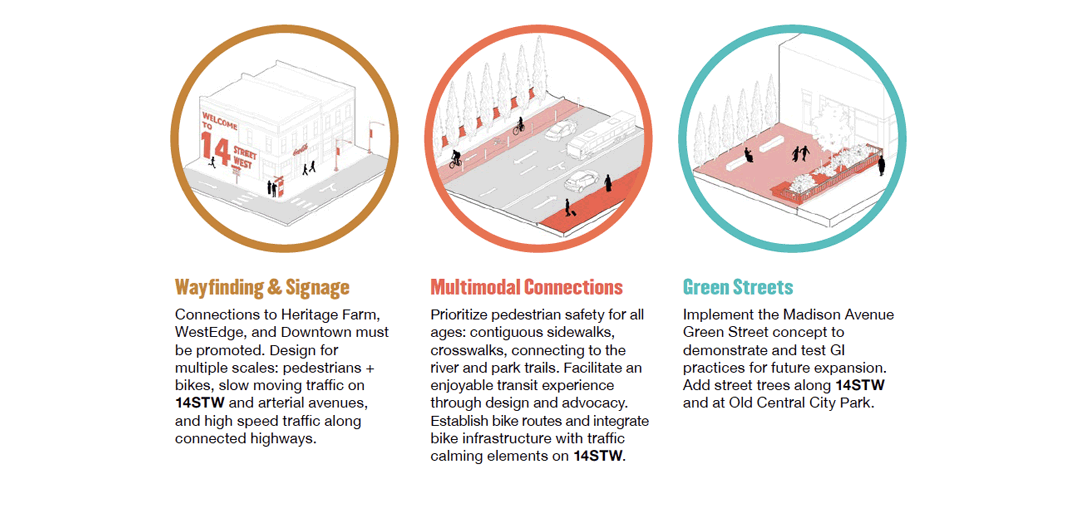
Excerpt from 14STW District Plan, West Huntington, WV
evolveEA has been working with what we call “pivoting communities” for more than 15 years. We relish the challenges and the meaning that come from collaborating with communities that are seeking to change, grow, and turn a corner. For these older communities looking forward, the identity and vibrancy they seek often necessitates adapting an inherited built environment to support the connections it wants to make. evolveEA is there to help them reevaluate and redesign their infrastructure to meet the needs of today and, hopefully, tomorrow by making it safe, systemic, social, and sustainable.
*Prior to joining evolveEA, Breen Masciotra wrote a grant to the Federal Transit Administration’s Pilot Program for TOD Planning, securing $556,500 for PRT to complete TOD planning in the Upper Mon Valley, from Swissvale to Turtle Creek. Also in a previous role, she wrote a grant on behalf of Manchester Citizens Corporation and the City of Pittsburgh to secure the $1.4M in RCP planning funds for Route 65.

